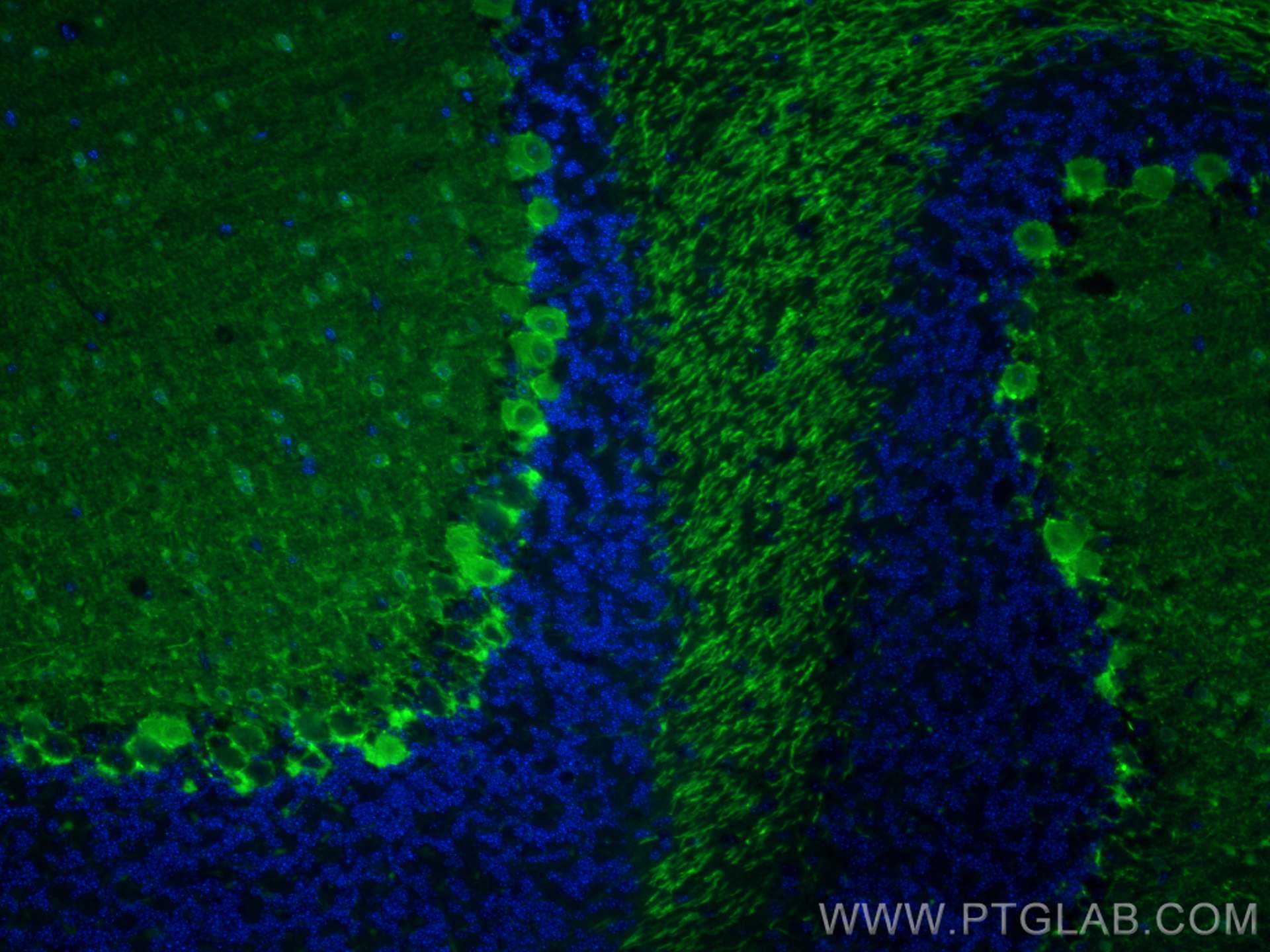Anticorps Polyclonal de lapin anti-Parvalbumin
Parvalbumin Polyclonal Antibody for IF
Hôte / Isotype
Lapin / IgG
Réactivité testée
Humain, rat, souris
Applications
IF
Conjugaison
CoraLite® Plus 488 Fluorescent Dye
N° de cat : CL488-29312
Synonymes
Galerie de données de validation
Applications testées
| Résultats positifs en IF | tissu de cervelet de souris, |
Dilution recommandée
| Application | Dilution |
|---|---|
| Immunofluorescence (IF) | IF : 1:50-1:500 |
| It is recommended that this reagent should be titrated in each testing system to obtain optimal results. | |
| Sample-dependent, check data in validation data gallery | |
Informations sur le produit
CL488-29312 cible Parvalbumin dans les applications de IF et montre une réactivité avec des échantillons Humain, rat, souris
| Réactivité | Humain, rat, souris |
| Hôte / Isotype | Lapin / IgG |
| Clonalité | Polyclonal |
| Type | Anticorps |
| Immunogène | Parvalbumin Protéine recombinante Ag30189 |
| Nom complet | parvalbumin |
| Masse moléculaire calculée | 12 kDa |
| Numéro d’acquisition GenBank | NM_002854 |
| Symbole du gène | PVALB |
| Identification du gène (NCBI) | 5816 |
| Conjugaison | CoraLite® Plus 488 Fluorescent Dye |
| Excitation/Emission maxima wavelengths | 493 nm / 522 nm |
| Forme | Liquide |
| Méthode de purification | Purification par affinité contre l'antigène |
| Tampon de stockage | PBS avec glycérol à 50 %, Proclin300 à 0,05 % et BSA à 0,5 %, pH 7,3. |
| Conditions de stockage | Stocker à -20 °C. Éviter toute exposition à la lumière. Stable pendant un an après l'expédition. L'aliquotage n'est pas nécessaire pour le stockage à -20oC Les 20ul contiennent 0,1% de BSA. |
Informations générales
PVALB is a high affinity calcium ion-binding protein that is structurally and functionally similar to calmodulin and troponin C. PVALB is expressed in high levels only in fast-contracting muscles and at lower levels in brain and several endocrine tissues. It is thought to be involved in muscle relaxation.
Protocole
| Product Specific Protocols | |
|---|---|
| IF protocol for CL Plus 488 Parvalbumin antibody CL488-29312 | Download protocol |
| Standard Protocols | |
|---|---|
| Click here to view our Standard Protocols |



